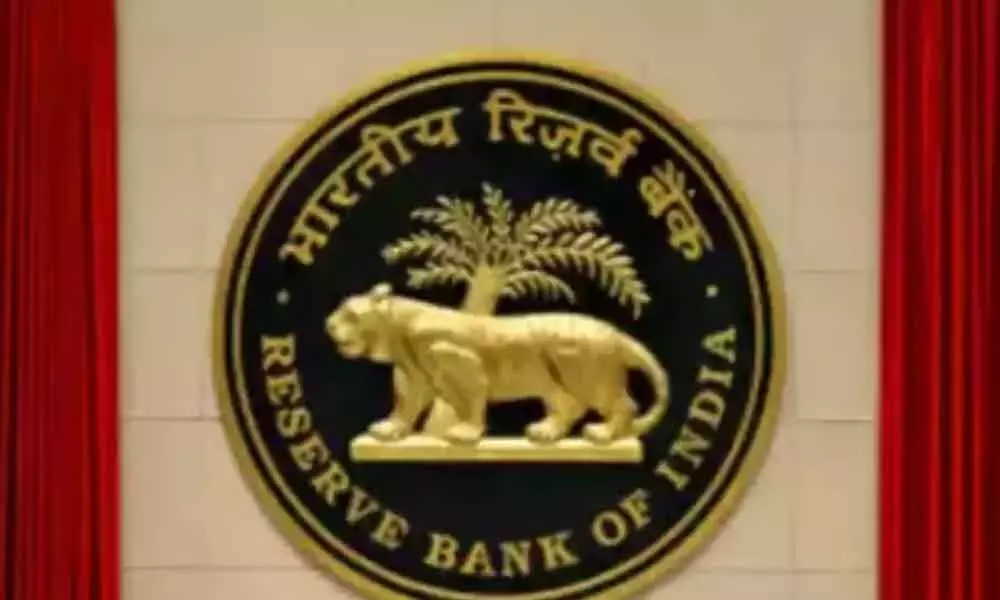Live
- KTR Accuses Congress Government of Neglecting Gurukuls, Claims Institutional Collapse
- Progress of country, tribals are inter-linked: President Murmu
- FIH Women’s Pro League: England thwart India fightback, win bonus point in shootout
- Metro Railway Kolkata to evacuate stranded rakes from tunnels using battery power
- Controversy Over Congress President’s Remarks on Maha Kumbh Mela
- CM Urges H.D. Deve Gowda to Stand Above Politics for Karnataka’s Water Rights
- Unseeded Kyrian Jacquet upsets second seed Billy Harris to win Delhi Open 2025 singles title
- India headed to become $30-35 trillion economy in next two decades: Piyush Goyal
- Medical Students to Adopt Rural Families as NMC Pushes for Community-Based Learning
- Central Railway runs special trains, improves crowd management for Mahakumbh devotees
Just In

Reserve Bank of India
Reserve Bank of India (RBI) on Tuesday released a revised prompt corrective action (PCA) framework for Scheduled Commercial Banks (SCBs). The...
Reserve Bank of India (RBI) on Tuesday released a revised prompt corrective action (PCA) framework for Scheduled Commercial Banks (SCBs). The provisions of the revised PCA framework will be effective from January 1, 2022.
Under the tweaked PCA framework, RBI has changed the key areas for monitoring to capital, asset quality and leverage from capital, asset quality and profitability, which were the key areas of monitoring in 2017's framework. Indicators to be tracked for capital, asset quality and leverage would be CRAR/ Common Equity Tier I Ratio2, Net NPA Ratio3 and Tier I Leverage Ratio4 respectively.
Breach of any risk threshold (as detailed under) may result in invocation of PCA.
| PCA matrix – Parameters, indicators and risk thresholds | ||||
| Parameter | Indicator | Risk Threshold 1 | Risk Threshold 2 | Risk Threshold 3 |
| -1 | -2 | -3 | -4 | -5 |
| Capital | CRAR - Minimum regulatory prescription for Capital to Risk Assets Ratio + applicable Capital Conservation Buffer (CCB) | Upto 250 bps below the Indicator prescribed at column (2) | More than 250 bps but not exceeding 400 bps below the Indicator prescribed at column (2) | In excess of 400 bps below the Indicator prescribed at column (2) |
| (Breach of either CRAR or CET 1 ratio) | ||||
| and/or | Upto 162.50 bps below the Indicator prescribed at column (2) | More than 162.50 bps below but not exceeding 312.50 bps below the Indicator prescribed at column (2) | In excess of 312.50 bps below the Indicator prescribed at column (2) | |
| Regulatory Pre-Specified Trigger of Common Equity Tier 1 ratio (CET 1 PST) + applicable Capital Conservation Buffer (CCB) | ||||
| Breach of either CRAR or CET 1 ratio to trigger PCA | ||||
| Asset Quality | Net Non-Performing Advances (NNPA) ratio | >=6.0% but <9.0% | >=9.0% but < 12.0% | >=12.0% |
| Leverage | Regulatory minimum Tier 1 Leverage Ratio | Upto 50 bps below the regulatory minimum | More than 50 bps but not exceeding 100 bps below the regulatory minimum | More than 100 bps below the regulatory minimum |
The PCA framework would apply to all banks operating in India including foreign banks operating through branches or subsidiaries based on breach of risk thresholds of identified indicators.
The objective of the PCA Framework is to enable Supervisory intervention at the appropriate time and require the Supervised Entity to initiate and implement remedial measures in a timely manner, so as to restore its financial health.
The PCA framework is also intended to act as a tool for effective market discipline. The PCA framework does not preclude the Reserve Bank of India from taking any other action as it deems fit at any time, in addition to the corrective actions prescribed in the Framework.
Following Indian Overseas Bank's exit in September, only the Central Bank of India remains under PCA.
A bank will generally be placed under the PCA framework based on the Audited Annual Financial Results and the ongoing Supervisory Assessment made by RBI. RBI may impose PCA on any bank during the course of a year (including migration from one threshold to another) in case the circumstances so warrant.
Exit from PCA
Exit from PCA and Withdrawal of Restrictions under PCA - Once a bank is placed under PCA, taking the bank out of PCA Framework and/or withdrawal of restrictions imposed under the PCA Framework will be considered:
a) if no breaches in risk thresholds in any of the parameters are observed as per four continuous quarterly financial statements, one of which should be Audited Annual Financial Statement (subject to assessment by RBI)
b) based on Supervisory comfort of the RBI, including an assessment on sustainability of profitability of the bank.
The corrective actions that may be prescribed to the bank that is placed under PCA are:
Risk Threshold 1
Restriction on dividend distribution/remittance of profits.
Promoters/Owners/Parent (in the case of foreign banks) to bring in capital
Risk Threshold 2
In addition to mandatory actions of Threshold 1
Restriction on branch expansion; domestic and/or overseas
Risk Threshold 3
In addition to mandatory actions of Thresholds 1 & 2.
Appropriate restrictions on capital expenditure, other than for technological upgradation within Board approved limits.
The common menu for discretionary actions includes special supervisory actions, strategy related, governance-related, capital-related, credit risk related, market risk related, HR-related, profitability related and operations/business-related among others.

© 2025 Hyderabad Media House Limited/The Hans India. All rights reserved. Powered by hocalwire.com







